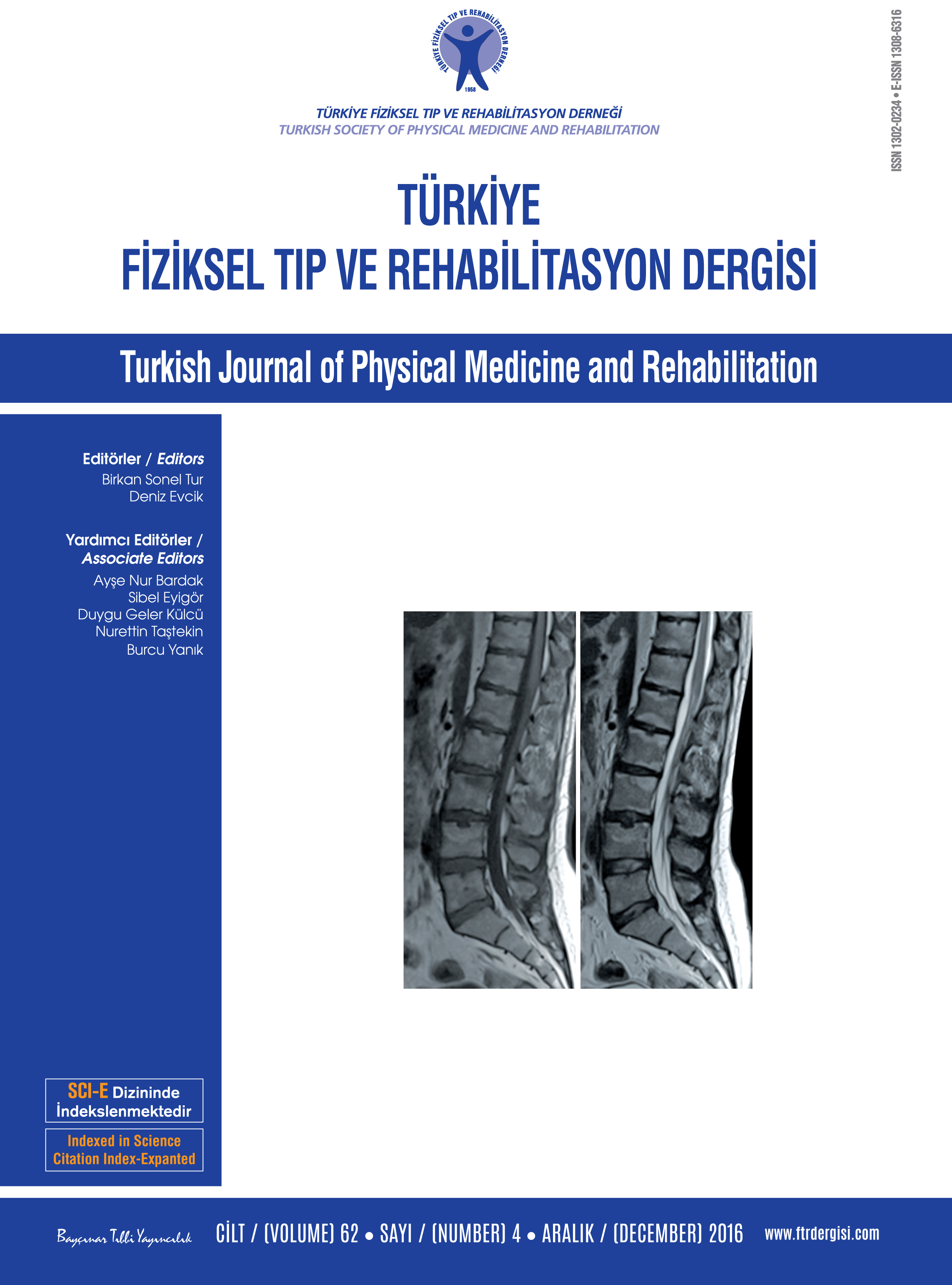Assessment of sitting abilities and upper extremity functions according to lesion level in children with spina bifida
2 Marmara Üniversitesi Tıp Fakültesi, (Öğrenci), İstanbul, Türkiye
3 Marmara Üniversitesi Tıp Fakültesi Çocuk Nefrolojisi Bilim Dalı, İstanbul, Türkiye DOI : 10.5606/tftrd.2016.01979 Objectives: This study aims to evaluate the ambulation skills, sitting balance, and upper extremity functions according to the lesion level in children with spina bifida (SB).
Patients and methods: A total of 90 SB patients (44 boys, 46 girls; mean age 7 years; range 4 to 12 years) and 42 age- and sex-matched healthy children (20 boys, 22 girls; mean age 7.5 years; range 4 to 12 years) were included in the study. The ambulation skills and upper extremity functions of the patients were analyzed. The upper extremity functions were assessed using the box and blocks test (BBT), nine-hole peg test (NHPT), and dynamometer.
Results: Spina bifida patients had worse performance on the NHPT, BBT and their handgrip hold was weaker, compared to healthy controls. The presence of shunt was found to be an important factor which deteriorated the upper extremity functions; however, SB patients without a shunt also had worse upper extremity function test performance, compared to healthy controls. As the lesion level increased, ambulation worsened and the sitting ability was adversely affected. The ambulation skill and sitting duration were also found to be correlated to each other.
Conclusion: Patients with SB have troubles with sitting abilities and upper extremity functions besides the ambulation problems. During the evaluation of SB patients with a shunt, particularly, these considerations should be kept in mind and the workouts for upper extremity functions and trunk balance should take part in the rehabilitation program.
Keywords : Ambulation, sitting balance, spina bifida, upper extremity function

















